Turkish Simit Recipe (Step-by-Step tutorial)
Feb 15, 2019, Updated Jan 12, 2021
This post may contain affiliate links.
Simit is a delicious Turkish sesame crusted bread that’s usually served for breakfast. Learn how to make traditional simit recipe at home with this step-by-step tutorial.
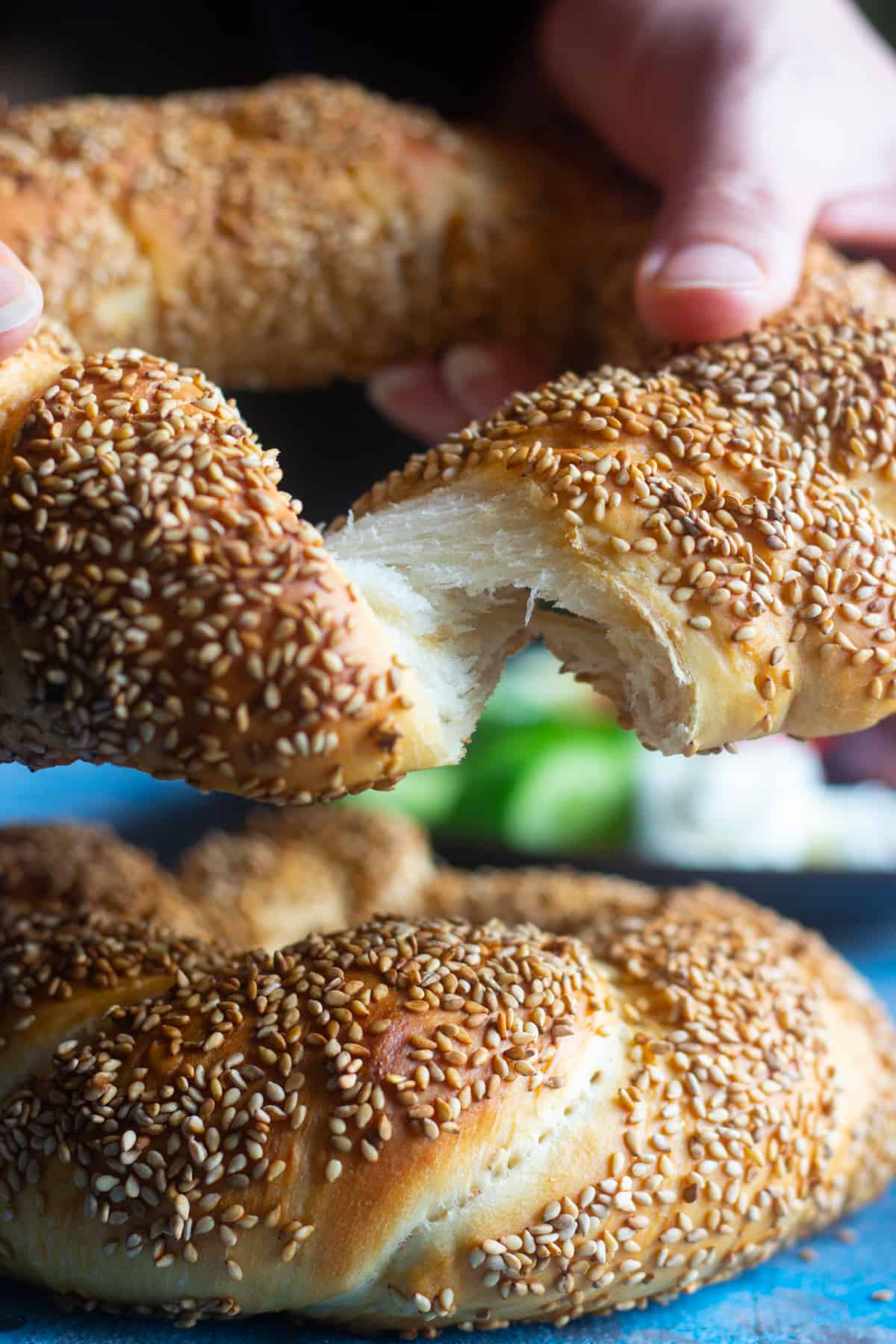
If you’ve been with me for a while, you know I love all kinds of Turkish recipes and you guys have been raving about them too! I’ve shown you how to make Turkish breakfast recipes including Turkish eggs (cilbir) and menemen (Turkish scrambled eggs). Now it’s time for one of the most iconic Turkish breads out there: Simit, a beautiful bread shapes like a ring, crusty on the outside and soft on the inside.
Table of Contents
What Is Simit?
When I moved to Istanbul many years ago, simit was one of the first things I ate. This sesame crusted, circular bread from Turkey really had me fall in love with Turkish baking.
Also known as Turkish bagel, Gevrek or Koulouri, this crusty bread is probably the most common bread in Turkey alongside bazlama and Ramazan pidesi (Turkish pide bread). It’s a staple in Turkish breakfast spread served alongside other items such as cheese, butter and jam.
Simit is usually sold in carts in Istanbul and the people who sell them are called simitci. They sometimes slice the simit in half and spread cheese to make it into a complete breakfast.
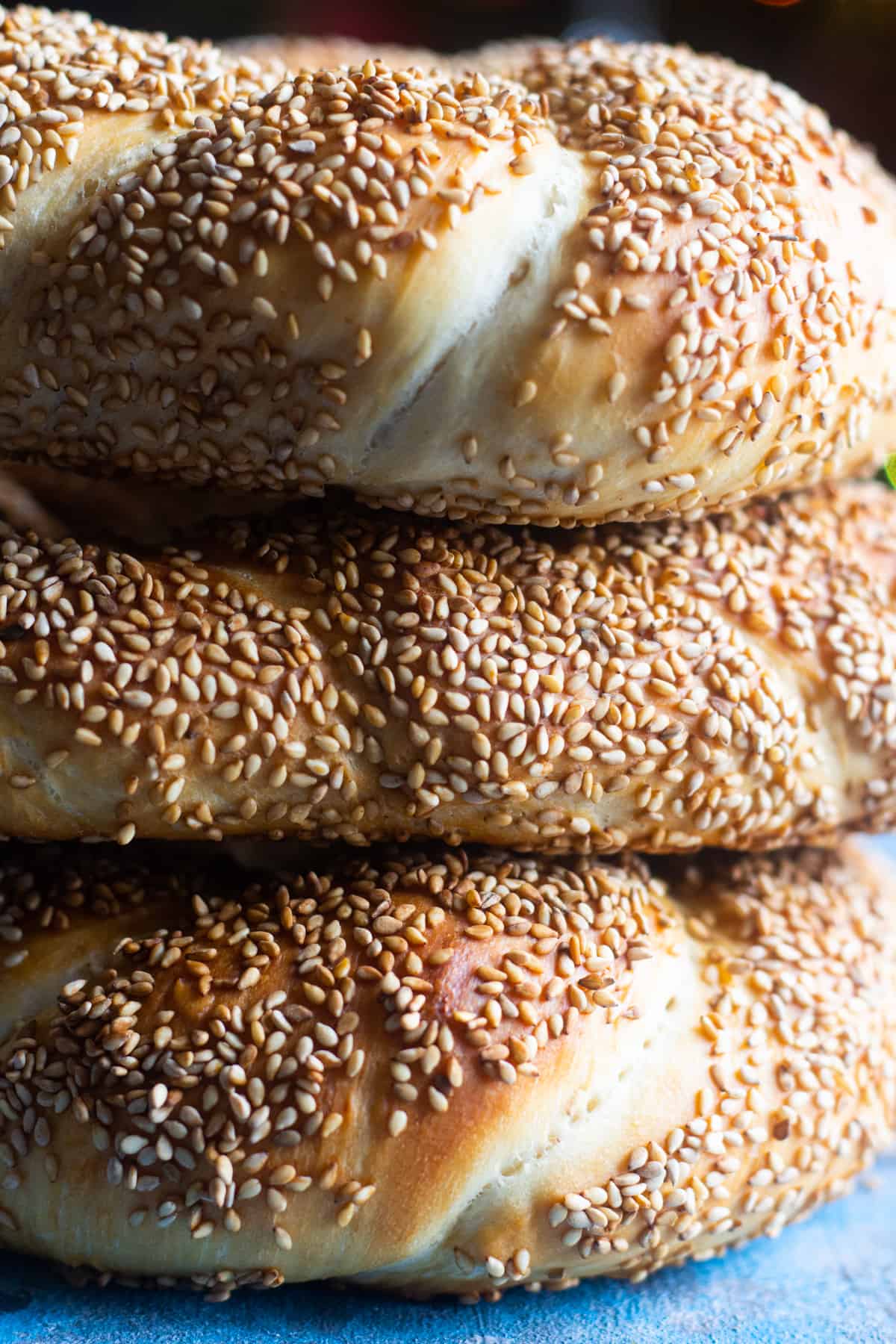
Once we moved to the US, one thing that I was missing the most was simit. We could barely find it in some Turkish and Mediterranean shops but they were usually frozen which were nowhere close to the freshly baked ones we used to get. That’s why we now make our own Turkish simit at home.
Ingredients To Make Simit
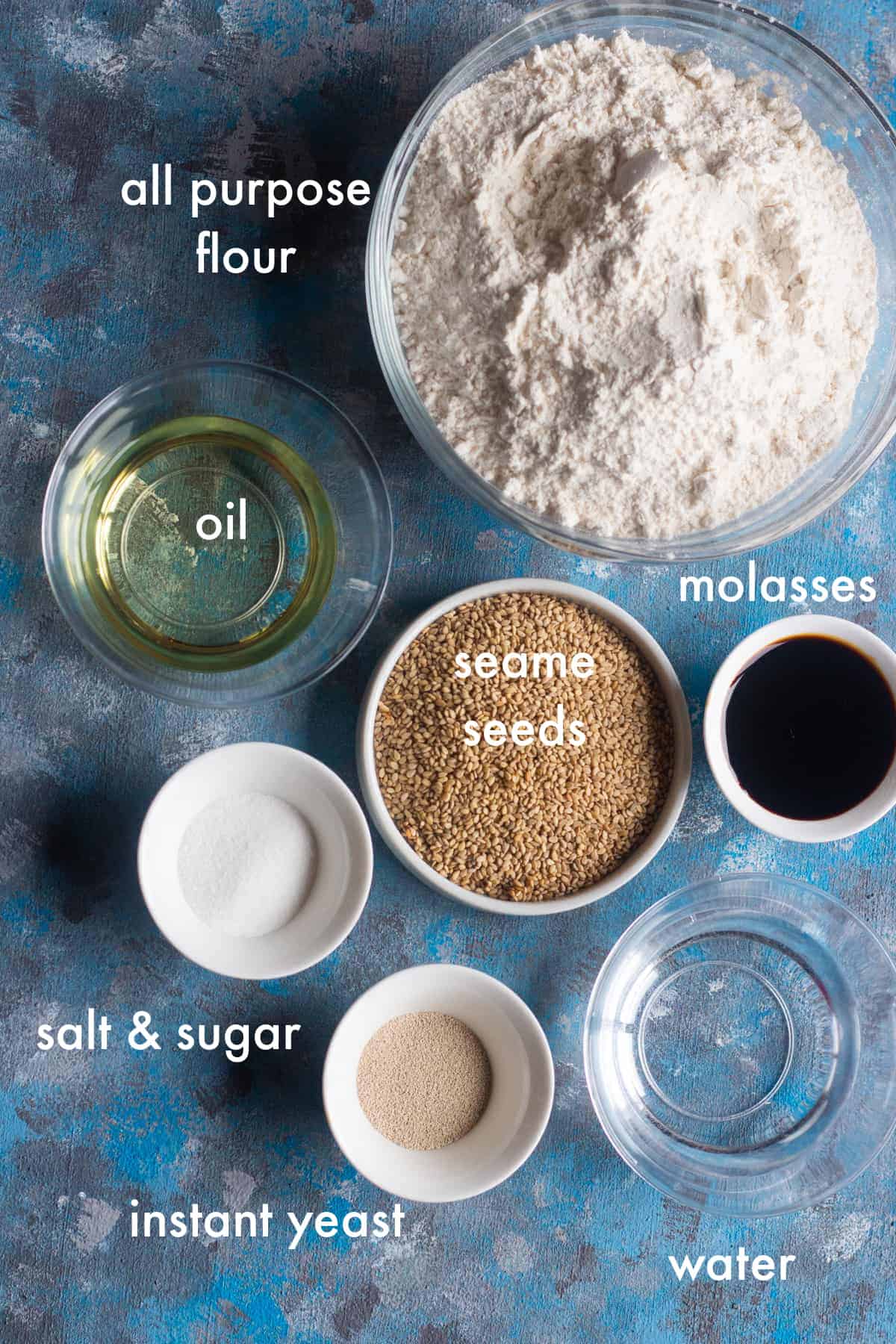
- Flour: You can use all purpose flour or bread flour. Whole wheat flour would make the simit a bit tough therefore I don’t recommend using it.
- Yeast: If using instant yeast, simply add it to the dry ingredients. However, if using active dry yeast, you need to activate it in warm water (between 105 and 110 degrees F).
- Salt and sugar: Use kosher salt or table salt and granulated sugar.
- Vegetable oil: You can use canola oil or olive oil as well.
- Molasses and sesame seeds: These are used to coat the simit before baking. You can use classic molasses, grape or mulberry molasses that you can find in Mediterranean or middle eastern shops. The molasses and water combination gives this circular bread that unique brown color complimented by a very slight sweetness.
How To Make Turkish Simit
Prepare The Dough
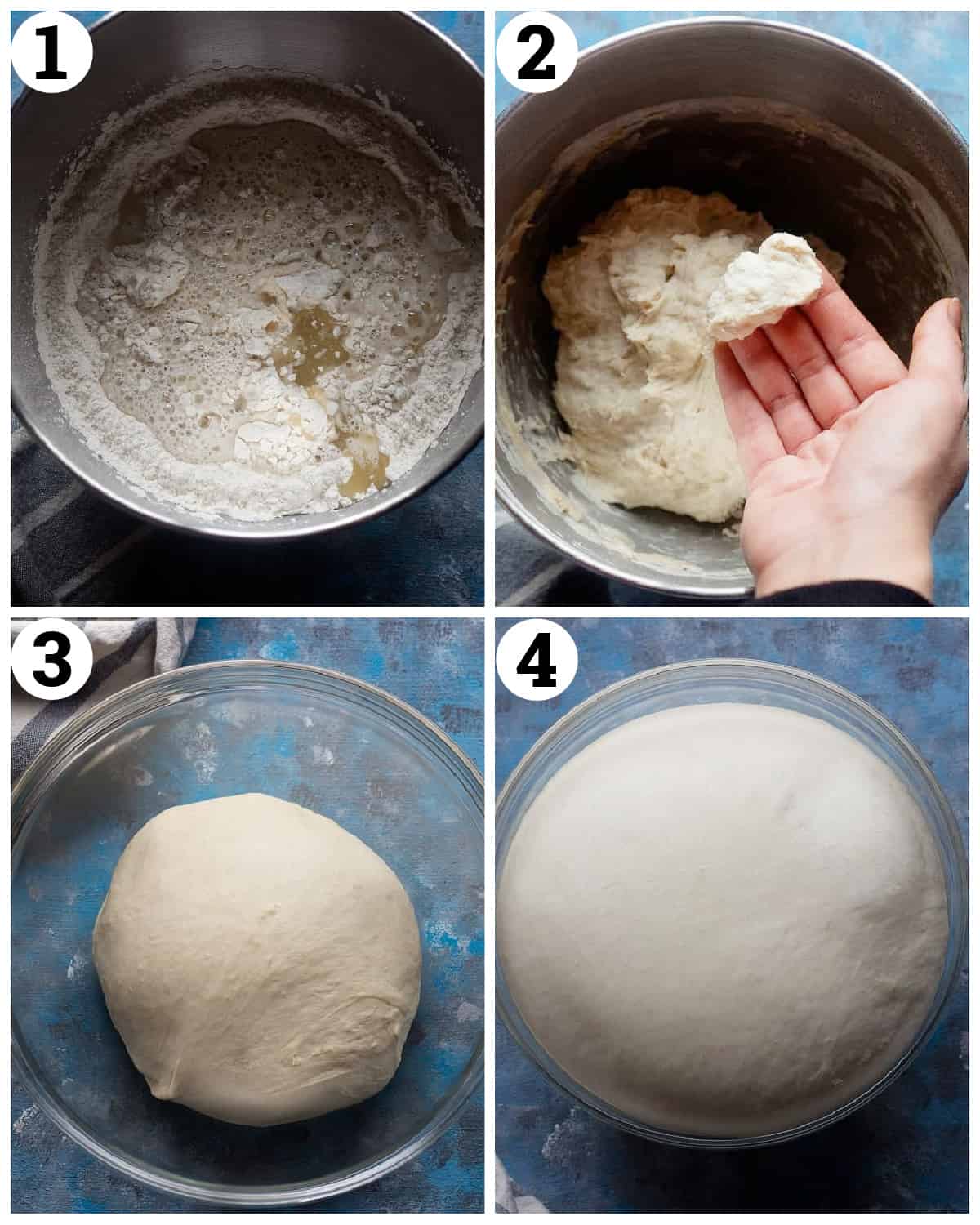
1- Start by placing the flour, yeast, salt and sugar in a stand mixer bowl. Add in warm water and vegetable oil. Make sure the water is not too hot or too cold. The water you use to make bread should be warm to touch.
2- Mix using the dough hook until the dough comes together and is a little sticky. If the dough is too sticky and sticks to the bowl, start adding the 5th cup of flour one tablespoon at a time. You will probably need only 2 or 3 tablespoons of flour so make sure not to add a lot of flour.
3- Once the dough has come together and is a little sticky, it’s time to knead the dough. Knead the simit dough using a dough hook for about 8 minutes until it’s not sticky anymore.
4- Cover the bowl with plastic wrap and a towel. Place it in a draft-free space such as an off oven and let it rise for 1.5 hours until it doubles in size.
Shape The Simit
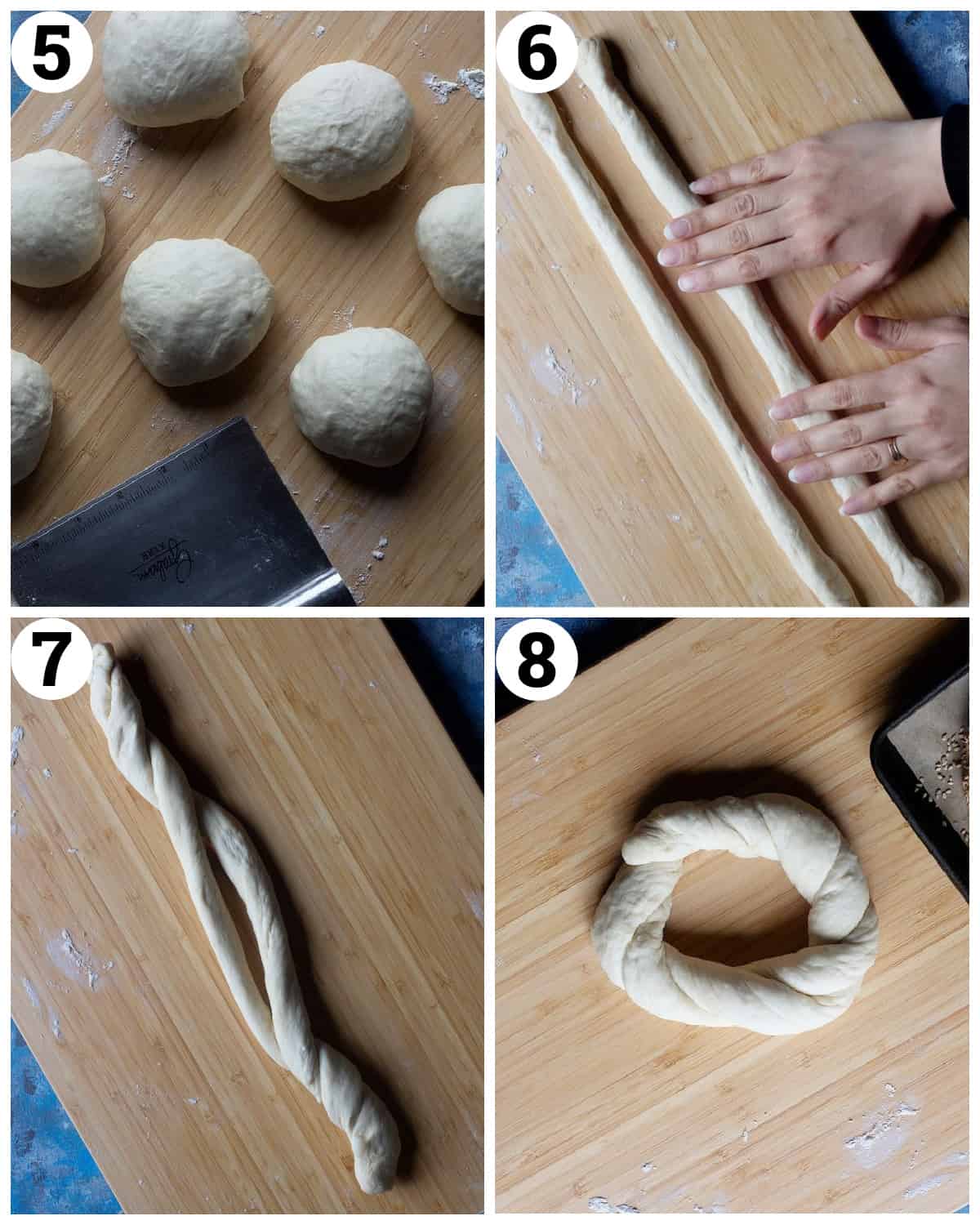
5- After 1.5 hours, check on the simit dough which must have doubled by now. Carefully punch in down and knead it for a few seconds. Divide the dough into 16 pieces.
6- Roll out two of the dough pieces into 25 inch tubes each and place them parallel to each other.
7- Pinch the ends and roll the tubes in opposite directions to make a twist (check out the step-by-step photos). Meet and pinch the ends on both sides together to form a circle.
8- Repeat with the remaining 14 pieces to make 7 more simits. An alternative method would be to divide the dough into 8 pieces and roll out to have a 40-45 inch tube, then fold it and twist it.
Final Touches And Bake
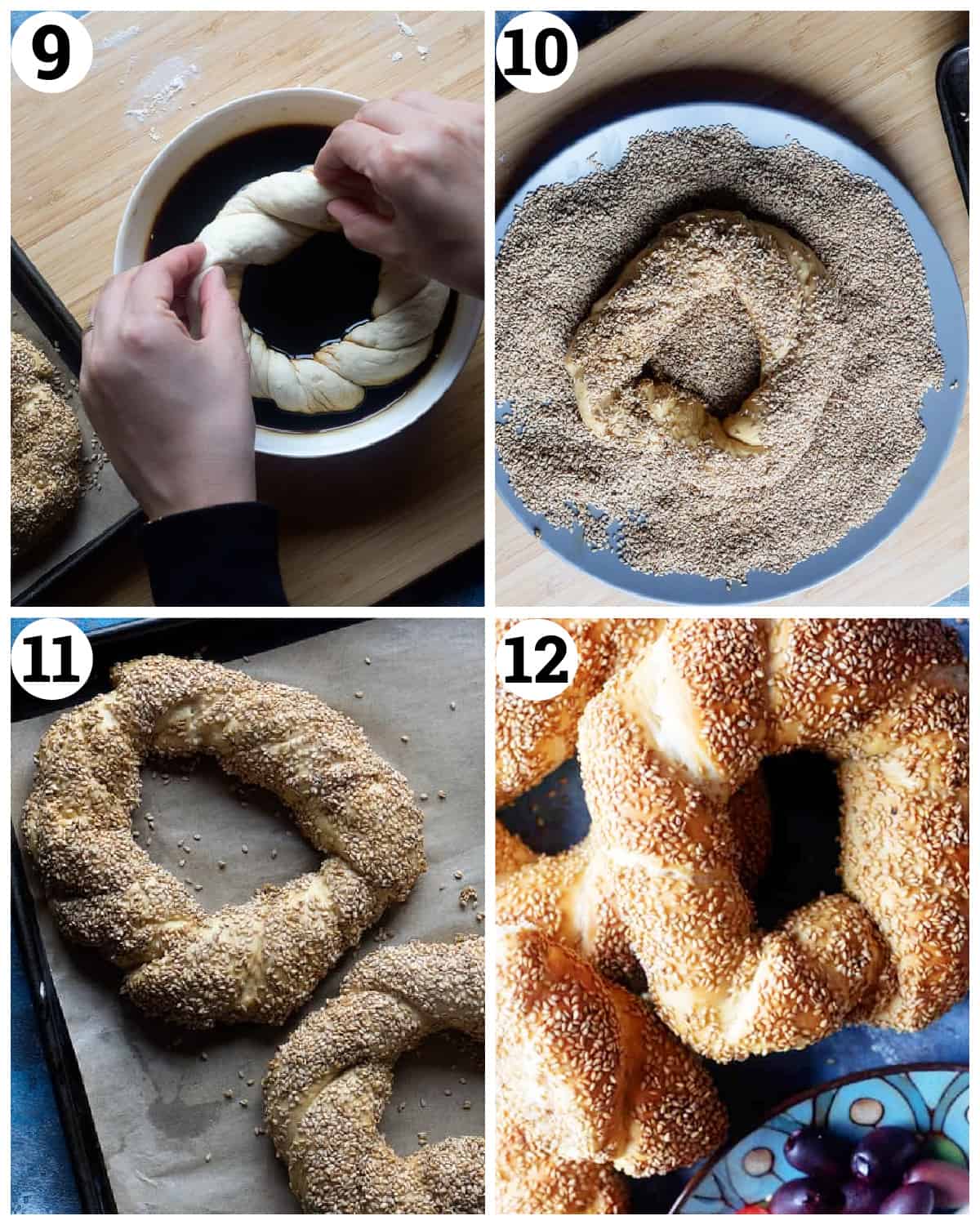
9- Toast the sesame seeds and in a shallow and wide dish (like a pie dish) whisk together the molasses and water. Dip each twisted dough in the molasses and water combination and make sure it’s covered on both sides.
10- Dip the simit in toasted sesame seeds and ensure they are fully coated on all sides.
11- Place them on a baking sheet lined with parchment paper. Let the dough circles rest for another 20 minutes. Meanwhile, preheat the oven to 400 degrees F.
12- Bake the simits in the oven for 12-15 minutes until they are brown and fully baked.
Tips To Make The Best Simit
- Shaping: While the shaping might seem complicated, it’s actually pretty simple. have patience and pay attention to the shaping instructions (and watch the video). After a couple of tries, you will get the hang of it.
- Check the yeast: Make sure the yeast is not expired. If using expired yeast, the dough won’t rise and you won’t be able to make the bread.
- Temperature: The dough needs to be in a draft-free and warm environment to rise. Make sure the bowl is covered and place it in a draft-free environment such as an off oven.
Serving Suggestions
Simit is traditionally served for breakfast with white such as feta, marinated feta or labneh, cucumbers and tomatoes as well as menemen, shakshuka and cilbir (Turkish eggs in garlic yogurt sauce).
Sometimes, you can find simit sandwiches made with cheese such as kaşar or mozzarella plus some tomatoes. It’s also common to have simit on its own as a snack or with a glass of cold Ayran (Turkish yogurt drink).
That being said, you can serve this round sesame bread with almost any kind of cheese you like. We also love having it with jam or chocolate spreads, needless to say that tahini and molasses is another favorite spread that compliments this Turkish bread very nicely.
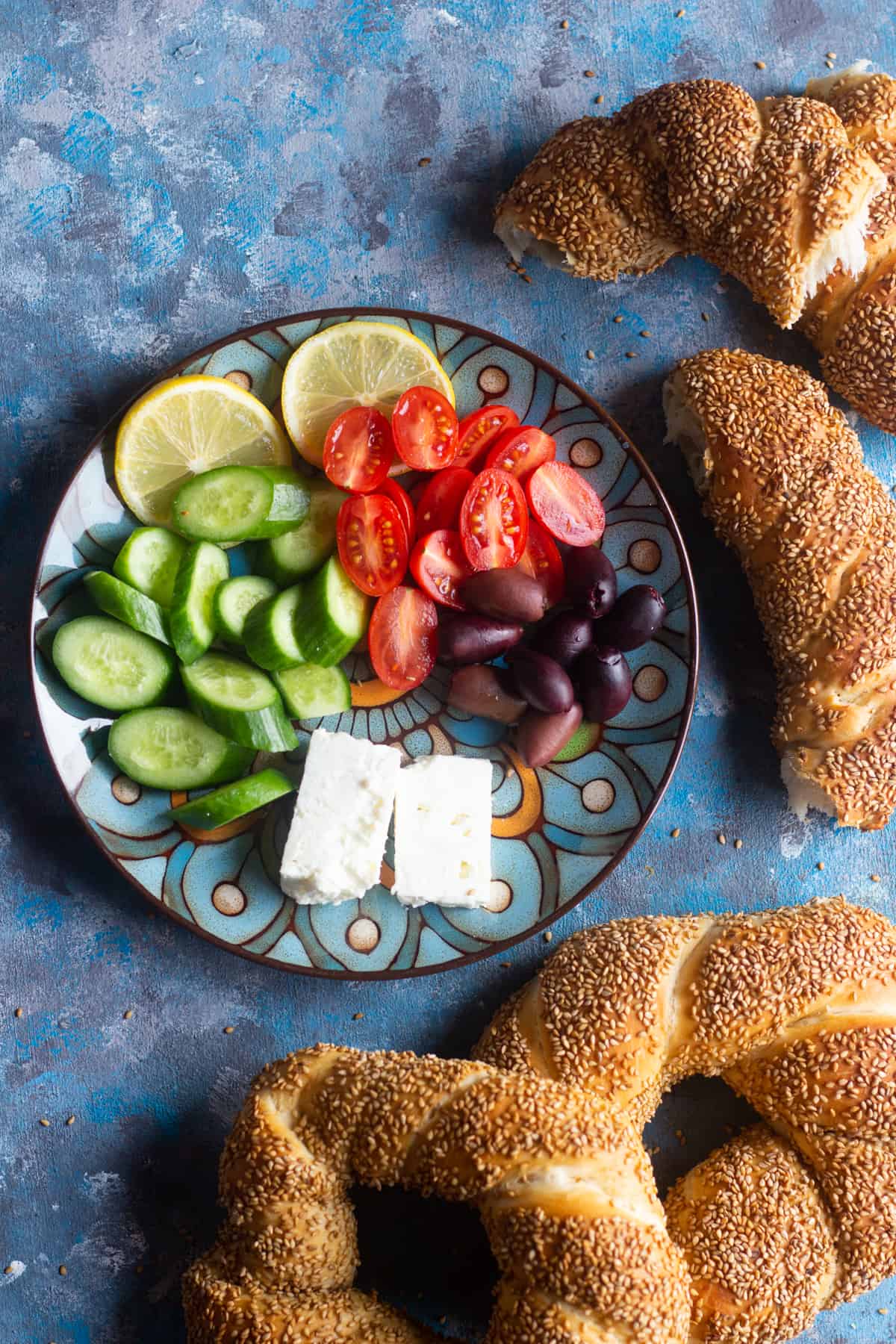
Storage And Reheating Instructions
Storing bread is very important especially when it comes to homemade bread. Because they don’t contain any preservatives, homemade bread can go bad quickly if you don’t store it properly.
Store the simit in an airtight container or sealed plastic bag. Simit usually lasts for about 2-3 days, however I prefer to have it fresh. If looking to store it for longer, keep the bread in an airtight container and refrigerate for up to a week. You can also reheat leftover simit in the oven or toaster right before serving.
You can also freeze simit. To do so, place the simit in a freezer safe bag and seal it tightly. Freeze for up to 3 months. To serve, defrost in the fridge overnight and the reheat in the oven or toaster.
Frequently Asked Questions
If you own a stand mixer, definitely use it for this recipe. However, if you don’t own one, simply use a large bowl and a wooden spoon (and later your hands) to make simit. Both approaches work for this traditional Turkish bread recipe.
Sesame is the main flavor of this bread so use it generously. You can always store and use the leftover sesame seeds. These days you can also find simits coated with sunflower seeds or oatmeal, but the classic version always has sesame seeds.
Turks usually use molasses made out of grapes, date or mulberries. However, you can also use regular molasses or even honey.
The main reason could be that you’ve added more flour than you need. Start with 4 cups of all purpose flour and add more flour (1 cup maximum) one tablespoon at a time.
Probably the only similarity between simit and bagels is that they’re both circular. Simit is not as thick and it’s crustier than bagel. The texture of simit is lighter compared to bagels and traditionally, they’re fully coated in sesame seeds.
What makes this Turkish bread different than any other bread out there is that it’s dipped in a molasses and water mixture before being rolled in a pool of sesame seeds.
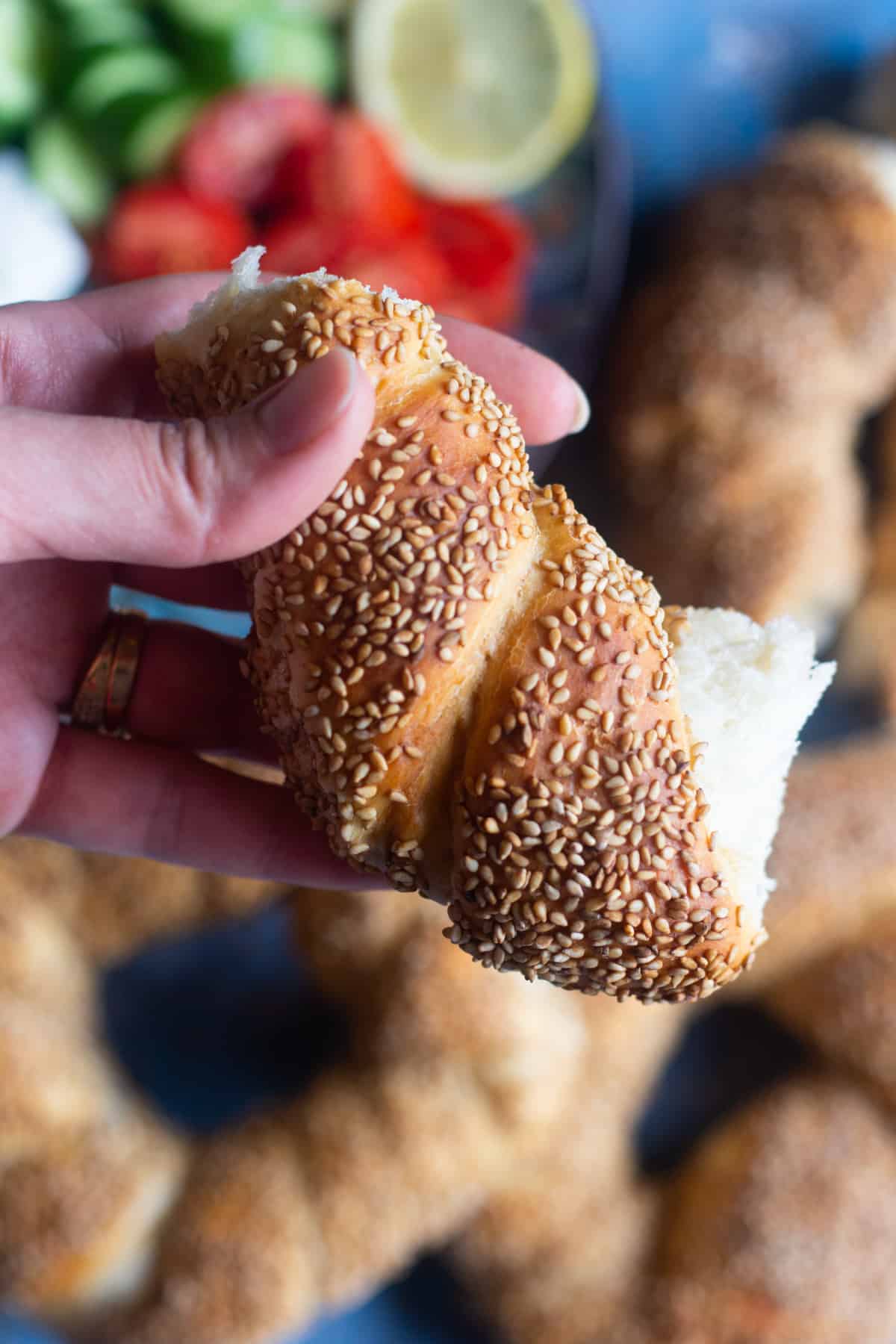
More Turkish Recipes
Mediterranean recipes
Turkish Borek Recipe (Sigara Borek)
Mediterranean recipes
Turkish Bulgur Pilaf Recipe
Mediterranean recipes
Gozleme Recipe (Turkish Stuffed Flatbread)
Turkish Recipes
Turkish Pide Bread (Ramazan Pidesi)
Did you make this recipe? I’d love to hear about it! Please comment and leave a 5-star🌟 rating below. You can also follow us on Instagram, Facebook, Pinterest or subscribe to our newsletter to get a free e-Cookbook!
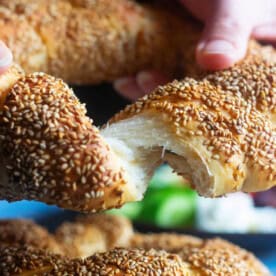
Turkish Simit Recipe
Ingredients
- 2 tsp instant yeast
- 1 tsp salt
- 1 tbsp granulated sugar
- 4 cups all purpose flour, plus 2-3 tbsp more if needed
- 1 1/2 cup warm water
- 1/4 cup vegetable oil
- 1/4 cup grape molasses
- 1/2 cup water
- 1 1/2 cup sesame seeds, toasted
Instructions
- In the bowl of a stand mixer, mix sugar, yeast, 4 cups flour and salt.
- Add in warm water and vegetable oil. Mix using the dough hook until the dough comes together and is a bit sticky. If the dough is not coming together, add 2-3 tablespoons all purpose flour.
- Knead the dough using the dough hook for about 8 minutes until it’s no longer sticky. Cover and let it rise for 1.5 hours until it doubles in size.
- Meanwhile, toast the sesame seeds in a pan. And mix the molasses with 1/2 cup water.
- After 1.5 hours, punch the dough down and divide it into 16 pieces. Roll out 2 pieces into 25 inch tubes each and lay them parallel to each other.
- Roll the tubes in opposite directions to make a twist. Meet the ends and pinch them together to make a ring. Repeat with the remaining 14 pieces to make 7 more rings.
- Dip each ring in molasses and water mixture then in sesame seeds and place on a baking sheet lined with parchment paper.
- Cover loosely and let it rise for another 20 minutes.
- Preheat the oven to 400 degrees F.
- Bake in the oven for 12-15 minutes until the simits are brown and fully cooked.
Video
Notes
- Storage: Place the leftover simits in a plastic bag and tie a knot to make sure it’s not in contact with air. You can also wrap them in a cloth and place them in a bread box. Simit usually lasts for about 2-3 days, however I prefer to have it fresh. You can also reheat leftover simit in the oven right before serving. You can also freeze them for several months.
- If molasses is not available, use honey instead.
- If you own a stand mixer, definitely use it for this recipe. However, if you don’t own one, simply use a large bowl and a wooden spoon (and later your hands) to make simit. Both approaches work for this traditional Turkish bread recipe.
- You can use olive oil instead of vegetable oil for this recipe if preferred.
Nutrition
Nutrition information is automatically calculated, so should only be used as an approximation.
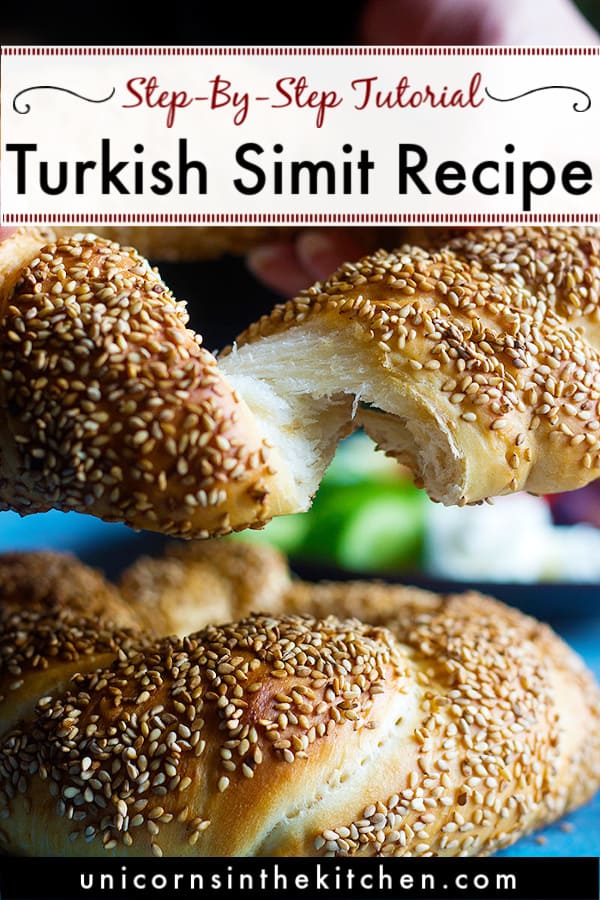
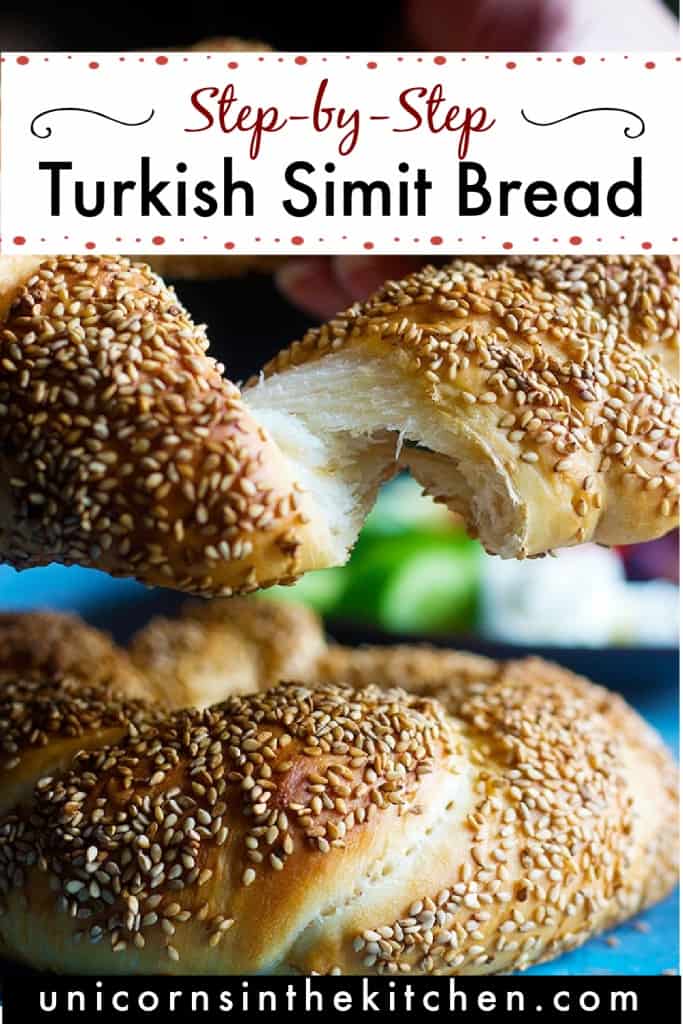

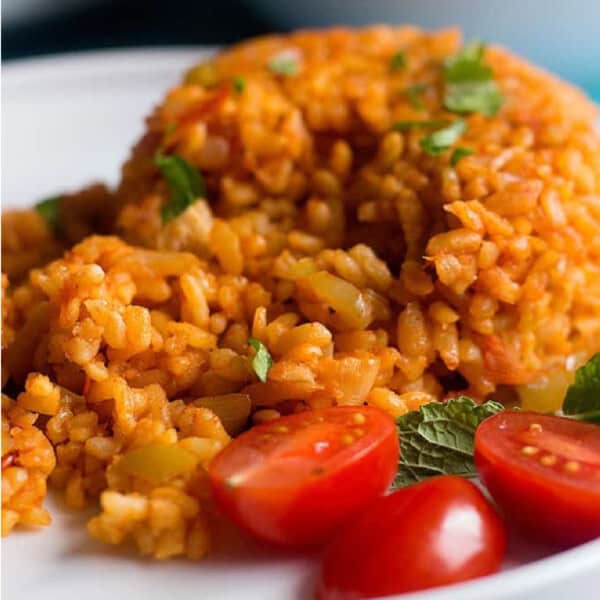

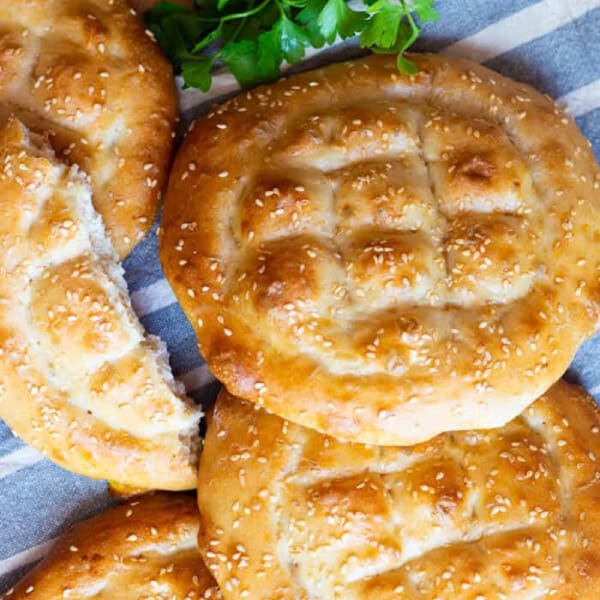









Delicious recipe ! easy to follow and this is the second time I am making it. My family loved it with Persian Chai.
I also spread feta cheese with a drizzle of quincy jam and it was delicious.
This Turkish Simit Recipe was seamless. We enjoyed it with breakfast and it was absolutely perfect.
The step-by-step tutorial was so easy to follow and the end result was delicious. The sesame seeds added the perfect crunch.
I love sesame seeds, so tried making this bread today. It turned out perfectly and so delicious!